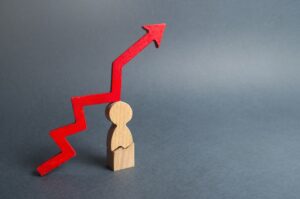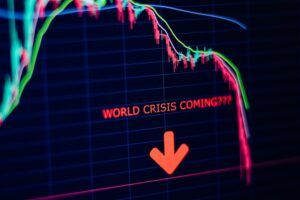Debt and the Economics of Debt
Debt is a fundamental aspect of modern economies, both at the macro and micro levels. Whether it’s governments borrowing to fund public projects or individuals taking out loans to finance their education or purchase a home, debt plays a crucial role in driving economic growth and financial stability. However, the economics of debt is a complex subject that requires a deep understanding of various factors and their interplay. In this blog post, we will explore the macro and micro perspectives of the economics of debt, why it is important, and the challenges associated with understanding it.
Why the Economics of Debt is Important:
Understanding the economics of debt is essential for policymakers, economists, and individuals alike. Debt can have a profound impact on economic growth, financial stability, and inequality. At the macro level, excessive government debt can lead to fiscal crises and hinder long-term economic growth. On the other hand, at the micro level, household debt can affect consumer spending patterns and overall economic activity. By comprehending the economics of debt, individuals can make informed decisions about their borrowing and lending activities, and policymakers can formulate effective strategies to manage debt and ensure economic stability.
The Challenge
The economics of debt is a complex field that involves multiple variables and their intricate relationships. It requires a solid understanding of economic principles, financial markets, and the functioning of various institutions. Moreover, the impact of debt can vary significantly depending on the specific context and circumstances. For example, the consequences of government debt may differ between developed and developing economies. Similarly, the effects of household debt can vary based on factors such as income levels, interest rates, and housing market conditions. To grasp the economics of debt comprehensively, one needs to consider these nuances and analyze the interplay of various factors.
Macro Perspective
At the macro level, debt can have a substantial impact on economic growth and financial stability. Government debt, in particular, is a crucial determinant of a nation’s fiscal health. When governments borrow to finance public projects, infrastructure development, or social welfare programs, it can stimulate economic growth and create employment opportunities. However, excessive government debt can lead to fiscal crises, as witnessed during the global financial crisis of 2008. High levels of government debt can result in higher interest payments, crowding out other essential expenditures such as education and healthcare. Moreover, it can erode investor confidence, leading to a loss of financial stability.
Micro Perspective
At the micro level, household debt plays a significant role in shaping consumer behavior and overall economic activity. When individuals borrow to finance their education, purchase a home, or invest in business ventures, it can drive economic growth and promote entrepreneurship. However, excessive household debt can have adverse consequences. High levels of personal debt can restrict disposable income and limit consumer spending capacity. This, in turn, can dampen economic activity and lead to a slowdown in economic growth. Moreover, when individuals struggle to repay their debts, it can result in defaults and foreclosures, causing financial instability for both borrowers and lenders.
Public Versus Private Debt: How Do They Differ?
Public debt refers to the money owed by governments to creditors such as domestic and foreign investors, central banks, and international financial institutions. It is typically used to finance government expenditures or bridge budget deficits. On the other hand, private debt refers to the money borrowed by individuals, households, and businesses from financial institutions and other lenders. While both types of debt impact the economy, they differ in terms of their implications and management. Public debt is subject to government policies, interest rates, and global economic conditions. Private debt, on the other hand, is influenced by factors such as income levels, creditworthiness, and prevailing interest rates. Understanding the differences between public and private debt is crucial for formulating effective strategies to manage them and ensure economic stability.
Debt and Inequality: How Debt Exacerbates Wealth Disparities:
Debt can exacerbate wealth disparities within societies. When individuals and households accumulate excessive debt, it can lead to a vicious cycle of financial vulnerability and limited upward mobility. High levels of debt can limit individuals’ ability to invest in education, start businesses, or save for the future. This can perpetuate income inequality and hinder social mobility. Moreover, the burden of debt falls disproportionately on low-income individuals and marginalized communities, further widening the wealth gap. By understanding the relationship between debt and inequality, policymakers can devise strategies to address these disparities and promote inclusive economic growth.
Interest Rates, Government Policies, and More:
Several factors can influence the outcome of debt and its impact on the economy. Interest rates play a crucial role in determining the cost of borrowing and the affordability of debt repayments. When interest rates are low, individuals and governments are more likely to borrow, stimulating economic activity. Conversely, high-interest rates can discourage borrowing and limit economic growth. Government policies also play a significant role in managing debt. Effective fiscal policies, such as prudent spending and tax reforms, can help reduce government debt and promote economic stability. Similarly, regulations and oversight in the financial sector can ensure responsible lending practices and protect borrowers from predatory lending. Understanding these factors and their implications is essential for assessing the potential outcomes of debt and formulating appropriate strategies.
Conclusion:
The economics of debt is a complex and multifaceted subject that requires a comprehensive understanding of various factors and their interplay. Debt can have a significant impact on economic growth, financial stability, and inequality, both at the macro and micro levels. By comprehending the economics of debt, individuals can make informed decisions about their borrowing and lending activities, and policymakers can formulate effective strategies to manage debt and ensure economic stability. While the challenges associated with understanding the economics of debt are significant, they can be overcome through diligent research, analysis, and collaboration between various stakeholders. By striving to comprehend the intricacies of debt, we can create a more inclusive and resilient economic system for the benefit of all.
For more information about the economics of debt and understanding borrowing and lending visit Uber Finance today!







